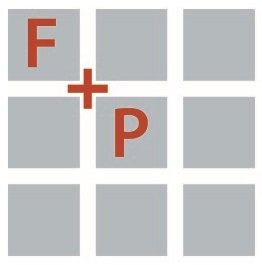Collaboration : Expanding Its Use and Definition
/By John Rufo
When someone describes the design process as collaborative, an image comes to mind of designers gathered around a table of drawings, a computer screen, or standing at a wall reviewing pinned-up documents and sketches as they problem solve and flesh out solutions. But seeing collaboration through this narrow lens stifles the potential of an understanding of the larger process as more inclusive and participatory by all the individuals that a given project will impact.
Michael Wang leads City of Newton design professionals forum on Zoning Redesign
The firm profile at Form + Place is one of few employees and lots of collaborators. In recent years we intentionally shaped the firm this way to allow the principals to stay closer to the work while drawing from a larger and more diverse range of experience and expertise beyond the walls of our studio. What advantage does this serve? One of our frequent collaborators, Jessica Bessette of Bessette Architecture and Design puts it like this:
“Ideally outcomes of the process end up in a different place than if any one person’s ideas were on their own. Involving the people we are trying to solve problems for as well as people outside of yourself leads to higher satisfaction both in the end product and in the relationships formed in the process.”
Jessica points out that “collaboration” and “co-creation” are often blended in a process that is driven by teaming with other people and disciplines.
Hello Washington Street – community feedback session
Co-creation, as described by Lauren Fischer of Call the Collective is a “boundary spanning process” that “produces something that did not exist before”. While we as designers regularly collaborate with other disciplines in the design field to produce results that are familiar and somewhat expected to us, it may be helpful to expand the notion of collaboration to include co-creation, especially when the process involves a community dialogue. One of our frequent collaborators, structural engineer Steve Siegel said to me recently,
“Our expertise is deep but narrow, so our problem solutions must incorporate inputs from other experts, who in turn don’t know what we know… effective collaboration is all about empathy.”
In the same way that we listen to the ideas and needs of our clients and collaborators with empathy, we can reframe the interface with community as a critical part of the creative process to heighten a spirit of collaborative community building.
Urban Land Institute - Jackson Square Walking Tour information session
So how does this play out? As part of the work that Form + Place regularly performs, my partner Michael Wang and I often present at and attend a variety of community forums that make up the entitlement process on projects as small as single-family homes and as large as 1 million + square foot mixed-use projects. Two examples of larger efforts are the Riverside and Newton Northland projects for which Form + Place served on the city of Newton’s peer review team. In both cases the project proponents embraced a collaborative review process as a key piece of the ongoing design dialogue and the city was able to reap the benefit of several experts to help form a cogent critique of proposed design and expand public input in the process.
Michael Wang updates the Charles River Regional Chamber on Newton Northland peer review process
We’ve come to see that along with words and phrases like “create a vision”, “complete a master plan”, or “create a sense of place”, the process of collaboration and co-creation needs to also include phrases like “community stakeholder”, “public forum”, “chamber of commerce”, “building consensus”, etc… When these touch points are thought of as inside the boundary of the creative process, our relationship to them changes and we are able to bring new voices into the dialogue rather than think of them as hurdles to be jumped over further down the track. The process is not actually easier. It requires patience, attention to details and a thick skin. Joel Kadis of Linear Retail once said to me that a good design partner
“will excel at listening to our needs, have the conviction to stand up for what they believe, integrate our thoughts, and do it all with a sense of humor”.
John Rufo scoops ice cream at an Upper Falls Rail Trail art opening and community awareness event
At the end of the day, every work of design locates itself within a community. Design leaders and community leaders have their particular expertise and a priority of issues that they are charged with addressing and getting right. The process can be long, but you need to trust that process to believe that the results will be there. Another one of our frequent collaborators, Brian Hilliard of tomhill Studio describes our collaborative model like this.
“I like to think of collaboration in the design process as the creative version of Just In Time (JIT) manufacturing. When everyone brings a particular skillset to the table it's a way to be more nimble, proactive (instead of reactive) and innovative.”






